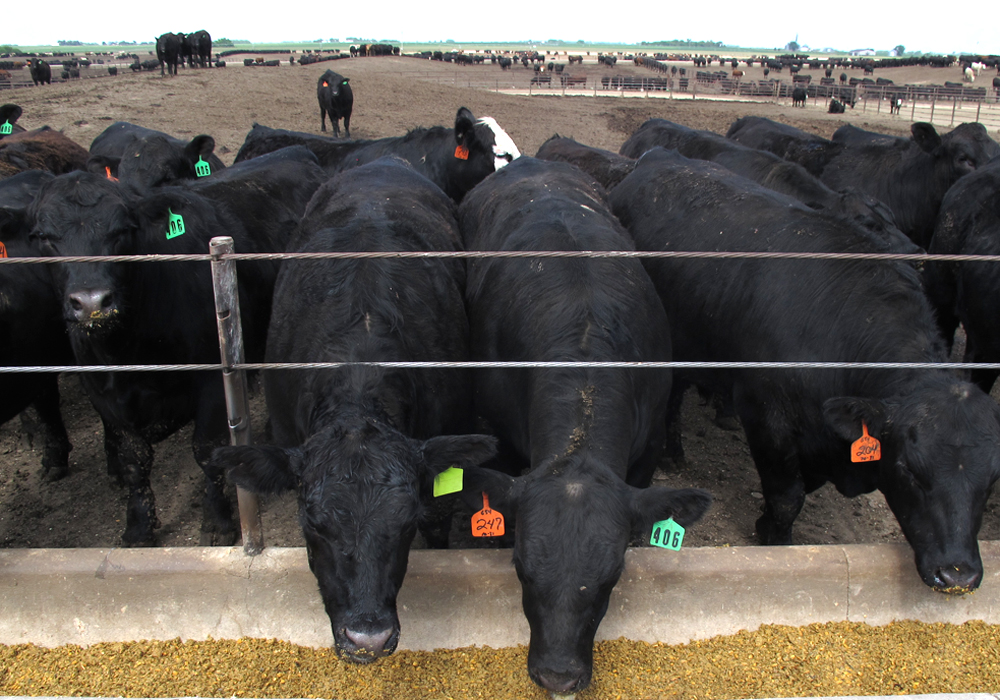With grocery food inflation still topping 10%, the mid-March Bureau of Labor Statistics report on...
12 Percent Claim is 100 Percent B.S.

As told by Greg Henderson with the Drover’s Journal, old, white males such as me are responsible for a large share of the world’s problems, claims there’s some truth to that broad statement, but sometimes you just have to call out B.S. when you see it.
Last week I learned that I’m a 12-percenter, and if you’re a Drovers reader, you’re probably a 12-percenter, too.
The 12-percenters are a demographic identified by researchers at Tulane University’s School of Public Health & Tropical Medicine, which conducted a study to identify the demographic, socioeconomic, and behavioral correlates of disproportionate beef consumption in the United States. The 12-percenters were singled out as a problem.
“Concern for the environment when making dietary choices has grown as the contribution of the food sector to global greenhouse gas emissions becomes more widely known,” the authors from Tulane wrote. “Understanding the correlates of beef eating could assist in the targeting of campaigns to reduce the consumption of high-impact foods.”
Beef, of course, is one of those “high-impact” foods. That’s an argument in itself, and one that has been a target of significant misinformation. (More on that later.)
Back to us 12-percenters. The Tulane researchers concluded that half of the beef eaten in the U.S. daily is consumed by 12% of the population, with us old men between the ages of 50-and-65 eating a “disproportionate” amount.
That’s a stunning claim, if true. But it just doesn’t pass the smell test – or, in this case, a calculator test.
The U.S. population is estimated at 334 million in 2023, which means there are roughly 40 million of us 12-percenters. Last year beef production was estimated at 28 billion pounds. So, half of that, 14 billion pounds is eaten by 40 million people? That’s 350 pounds per year for the 12%, nearly a pound per day.
That’s a quarter-pounder for breakfast, a quarter-pounder for lunch, and an eight-ounce steak for dinner. Every day! Preposterous!
When reviewing claims such as the 12%, we’re often told to follow the money. Well… Tulane’s research was supported in part by a grant from the Center for Biological Diversity, a non-profit conservation group. That’s not to suggest anything improper, but worth noting the Center for Biological Diversity has urged the EPA to “regulate factory farms.”
Let’s revisit the issue of “high-impact” foods. In the introduction to the study, the Tulane researchers said, “Meat, particularly from ruminant animals, is at the top of the list of impactful foods. Livestock alone accounts for 14% of global Green House Gas Emissions (GHGE).”
In the context of this study, that quote is an apples and oranges comparison. The authors clearly identify the U.S. as their research target, yet they cite a 10-year-old study from the U.N. that assigns 14% of global GHG emissions to livestock. A study, you might recall, that was challenged by a prominent U.S. researcher.
Much of the misinformation about beef can be traced to the 2006 United Nation’s Food and Agriculture Organization report “Livestock's Long Shadow: Environmental Issues and Options.” That report said livestock are responsible for 18% of anthropogenic greenhouse gas emissions, a figure which FAO changed to 14.5% in its 2013 study “Tackling Climate Change Through Livestock” and cited by the Tulane study authors.
But here’s why that claim is apples to oranges. The 18% claim seemed exaggerated to Dr. Frank Mitloehner and his colleagues at the University of California at Davis. Mitloehner, an animal scientist and air quality expert, uncovered some critical flaws in the U.N. report that resulted in livestock’s role being overstated. And, what do you know, in 2013 they amended the report and that’s where the 14.5% GHGE contribution comes from.
But that’s global livestock emissions. In the U.S., the number is… 4.2%! That’s quite different than what many anti-beef activists would have you believe.
In his 2015 report, “Livestock’s Contributions to Climate Change: Facts and Fiction,” Mitloehner said: “Leading scientists throughout the U.S., as well as the U.S. Environmental Protection Agency, have quantified the impacts of livestock production in the U.S., which accounts for 4.2% of all GHG emissions, very far from the 18% to 51% range that advocates often cite.”
Further, Mitloehner offered some logic years ago that is still valid today regarding livestock production. "The developed world's efforts should focus not on reducing meat and milk consumption, but rather on increasing efficient meat production in developing countries, where growing populations need more nutritious food. Smarter animal farming, not less farming, will equal less heat. Producing less meat and milk will only mean more hunger in poor countries."
EDITOR’S TAKE:
It does seem rather improbable that 12% of the U.S. population would consume 50% of the beef produced here. And we have reported before that the amount of GHGE from cattle is much lower than some have proclaimed. Thus, a great deal of doubt arises from studies like the one conducted by Tulane University. In fact, history can be a great teacher when it comes to studies about our food and dietary habits. Countless studies have condemned or demonized various foods and production practices over time, i.e., eggs, milk, apples, butter, bacon, lettuce, sugar, and the list goes on. Despite all of these so-called “scientific studies”, agriculture and the farmers/ranchers who manage the land, continue to supply us with the most nutritious, healthy, safe and reasonably priced food on the planet! That is why we need to recognize their contributions with the best service, parts and trucks available. Let them know you’re behind their efforts by posting your appreciation and your inventory on AgTruckTrader.com.








